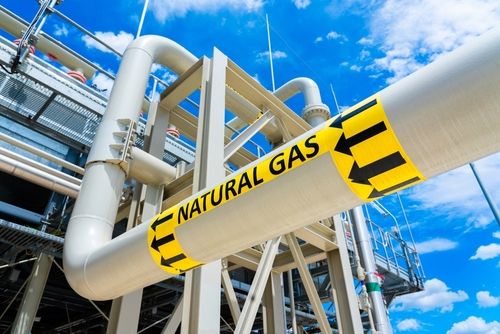Natural Gas drops below $3: Key drivers behind the move
Natural gas price drops below $3 after several months of continued support as seasonal demand weakens and supply remains robust
Natural gas prices have finally broken below the critical $3 support level—a threshold that had consistently capped downside moves since the beginning of the year. After an initial dip beneath this level was quickly reversed, last week saw renewed bearish momentum, culminating in a nine-month low on Tuesday. Since then, prices have stabilised, with $2.85 emerging as a near-term support.
Currently, natural gas is trading within a familiar range of $2.78 to $3.12—a zone that has historically seen frequent two-way price action. In the absence of a new catalyst, this suggests a potential period of sideways consolidation may be underway.
Natural Gas (XNG/USD) daily chart

(Past performance is not a reliable indicator of future results)
Fundamental drivers behind the price drop
The recent decline in natural gas prices can be traced to a combination of seasonal, structural, and geopolitical factors. Despite strong long-term fundamentals, short-term pressure has emerged from several key developments.
First, weaker seasonal and industrial demand is contributing to the softening in prices. As the heatwave season begins to ease across major U.S. regions, electricity demand is starting to wane. This drop-off in peak power consumption is reducing near-term natural gas usage and putting downward pressure on spot prices. Industrial demand has also moderated slightly amid slower-than-expected manufacturing output.
Furthermore, the supply side remains strong. Rising production and improved infrastructure are helping to keep the market well-supplied. The U.S. natural gas industry continues to pivot strategically toward more gas-focused drilling. This trend is being supported by the expansion of takeaway capacity through major pipeline projects. These developments are easing bottlenecks and facilitating higher throughput, increasing available supply in key hubs.
Another important factor is the global expansion in LNG capacity, which has significant implications for price stability, which can lead to softer prices in Europe and Asia. While this supports U.S. export volumes in the long run, the flood of available supply—both domestically and internationally—may cap upside potential for U.S. prices, particularly if demand plateaus or weather-related consumption fails to spike.
Finally, there’s a geopolitical lens to consider. The market is beginning to factor in the possibility of a “peace dividend”, particularly if negotiations surrounding the war in Ukraine gain momentum. A de-escalation of that conflict would likely reduce the geopolitical premium currently embedded in global energy pricing. European prices have already shown signs of moderation on the back of easing tension, and a similar sentiment recalibration could weigh on U.S. gas if risk premia continue to unwind.
In short, while structural demand for natural gas remains robust, a convergence of milder weather, strong production, global supply growth, and shifting geopolitical dynamics are all contributing to the recent correction in U.S. natural gas prices.